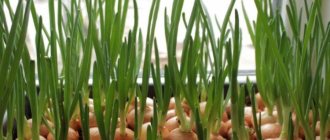What size container should be for planting aloe?
A properly selected pot for aloe will provide good conditions for plant growth. Home care in this case will consist of monitoring whether there is enough space for the plant in the pot. The calculation is simple: the length of the sheet and the diameter of the dish are equal to the ratio 2:1. The depth of the pot should be small. It is best to purchase ready-made soil, especially for succulents. The soil should not contain peat. Properly selected dishes will help ensure good care of the plant at home.
How to organize a rest period?
Conditions necessary for plant rest:
- from October all feeding is stopped;
- watering is carried out twice a month, and with the onset of winter once a month;
- the pot of aloe is removed to a bright but cool place, away from heating appliances;
- maintain a temperature no higher than 14ºC.
With a properly organized dormant period, aloe can bloom within a few years.
Plant transplant method
After the preparatory work has been completed, you can begin the main work. Considering the age of the plant and its size, it is advisable for the owner to know how to replant aloe at home. The procedure should be something like this:
- Take a plant and examine the rhizome. If it grows to the sides, then you need to choose a wide pot. If the rhizome grows downwards, then a deep bowl will be required.
- Pour a little earthen cushion into the prepared pot.
- Carefully take the plant and place it in a new container, adding a little soil to the sides.
After a few days the soil may become compacted and may need to be added a little bit at a time. Place the transplanted plant in the shade for about a week. Watering begins after five days. Only after this time has passed, the plant is transferred to a lighted place.
How to replant aloe
The aloe root system is well developed, so young specimens are replanted annually, and adults - once every 2-3 years (Figure 4).
Note: This procedure is necessary to ensure that the root system has enough space to grow.
For transplantation, the transshipment method is used. Three days before transplanting, watering is stopped to make it easier to remove the plant with an earthen lump. When choosing a pot, they are guided by the state of the root system: if it grows deep, choose a long container, and if it grows wide, then a wide pot.
Figure 4. Aloe is transplanted using the transshipment method
Be sure to add a layer of drainage to the bottom of the new pot. The soil should be light, but without peat. The easiest way is to buy ready-made soil mixture for succulents. You can prepare the soil at home by mixing 1 part leaf soil and sand with 2 parts turf soil. To keep the soil loose, you can add a little charcoal or fine expanded clay.
Aloe propagation methods
There are several options for propagating this succulent. We choose a way to propagate aloe at home, for example:
- Radical shoots.
- Plant cuttings.
- Seeds.
- Upper shoots.
Reproduction by root shoots coincides with the planned transplantation of an adult plant. Using a sharp knife, you need to separate the shoot (it is also called “baby”) and place it in a glass of water for the roots to grow. It should take about two to four weeks for the shoot to take root. So, it's time to transplant it into a pot. Then all that remains is to follow the rules on how to grow aloe at home.
Propagation by cuttings involves using a very sharp knife to cut a leaf from an adult plant that has at least eight large leaves. The cut area should dry out a little. Treat the cut with ground activated carbon. This leaf needs to be stored outdoors for about a week. After the cutting site has completely dried, the cuttings can be planted in the ground. If there are a lot of cuttings, then they are planted in rows. Aloe cuttings can be carried out throughout the year.
Propagation by seeds is carried out in early spring, around March-April. You should first prepare small dishes and soil. The room temperature should be more than +20 °C. Water the soil in the container and spread out the seeds, cover it with a thin layer of sand, and cover the container with glass or film. It is necessary to provide watering and spray the emerging leaves in a timely manner. As soon as three true leaves appear, the seedlings need to be transplanted into other containers no more than five centimeters high. After a year, the grown plants are transplanted into larger containers. This is not the easiest method of propagation, but a large number of plants can be grown.
Reproduction by upper shoots occurs in the same way as by basal shoots. After cutting off the top with a sharp knife, the plant is dried for about three days. Then they are planted in wet sand to a depth of three to four centimeters. After rooting, they are transplanted into another container, and then they begin to grow aloe at home like any indoor plant, with love and care.
Features of care
Landing
The question of how to plant aloe from a shoot is of interest to novice gardeners. For aloe, pots are purchased before planting. They should be spacious and large in volume, preferably ceramic, so that the root system can “breathe”. The root grows well, it will be uncomfortable in a small bowl, since an incorrectly planted aloe shoot begins to signal an error with crawling roots and drying leaves.
Replanting should be done when the plant becomes crowded. Each time the aloe flower is placed in a new, larger (in accordance with the dimensions of the flower) bowl, in a certain soil composition. Although the unpretentious plant does not require soil, for a young sprout you need to buy soil at a flower shop. By the way, agave prefer to grow in cacti soil.
First, drainage is poured, then soil. Lightly shed and you can plant aloe. After planting, the indoor flower is placed in a cool place where direct sunlight does not reach. Then they transfer it to a sunny windowsill: after all, agave (the second name for aloe) is a heat-loving plant.
ADVICE
Experienced gardeners advise keeping the soil in a hot oven to protect the future plant from diseases and harmful insects.
Watering rules
With proper care, aloe grows quickly at home. When watering aloe, you must follow this rule:
- In summer, once every 7 days is enough, but generously. If the agave begins to bloom, watering increases.
- In winter, when the plant rests, it grows very slowly, moisture consumption is minimal, it is enough to water once every 15 days.
How to water aloe properly so as not to harm it:
- Moisture stagnation should not be allowed. Roots rot in water. A lack of moisture in the soil is easily determined: usually the fleshy leaves become flat and the tops curl.
- A drainage cushion made of expanded clay, brick chips, and fine gravel helps prevent stagnation.
- Before planting aloe, the bottom of the pot is drilled in several places so that excess water drains into the tray, otherwise the ground becomes covered with a green coating.
- Watering from above is prohibited. It is better to pour water into a tray and place a flower in it.
- Use water at room temperature. If water is taken from the system, it is first settled.
- In summer, high humidity is created around the plant by spraying
- Once every two months, special fertilizers are added to the water for irrigation and the home healer is fed.
Lighting Features
We've talked about how to water aloe, now it's time to talk about lighting. Any home flower is demanding of a certain light regime. Place the agave on a sunny windowsill. As for the winter period, it can withstand darkening well, dispensing with artificial lighting.
To create a uniform arrangement of leaves, indoor flowers, including agave, are moved to the balcony for the summer. You need to place it so that direct sunlight does not hit it and burn it.
Properly caring for agave means creating temperature conditions: in summer from +22 to 26 degrees, in winter within +10 and a little higher.
Transfer rules
The indoor flower needs to be replanted. This procedure is usually carried out with the onset of spring days. If you transplant the agave correctly, it quickly takes root and begins to form new leaves.
Before replanting aloe at home, divide the plants by age. If the plant is young, it needs to change the pot and soil annually. Old after 2 or 3 years. It is also necessary to plant heavily overgrown agave plants, regardless of age.
After preparing the container and soil, separate the plant from the pot using a knife. You need to shake off the old soil from the roots and cut off the darkened roots. The same operation is carried out with damaged roots. Having placed the flower in the center, you need to add soil and compact it.
When aloe is transplanted, a lot of varied planting material remains:
- root shoots;
- accidentally broken leaves;
- cut cuttings from the top. By the way, the top is specially cut off to obtain a new plant.
Which aloe breeding method should you choose?
There are several ways to propagate aloe, each requiring its own approach. Therefore, if you have no experience, you will have to decide and choose one thing:
- Seeds. Not all flower growers decide to use this method, because it takes a whole year to get a flower. It looks like this: sowing seeds, obtaining seedlings, caring for them, creating certain conditions. You'll have to fiddle around like a small child.
- Growing aloe from a leaf is a practical method. Pinch off the planting material and sprinkle the cut with activated carbon. Let it sit for 5 days to dry. Then immerse it 5 cm into the ground and cover it with a jar. Since the leaf is without a root, planting is carried out in moist soil and covered with a jar on top. The created greenhouse effect accelerates the development of the root system (10-15 days).
- Now let's figure out how to grow aloe from a shoot. Take the desired part from a healthy plant. The shoot should have up to 8 leaves. Trim the aloe in the right place and remove the planting material to dry for five days. Before planting an aloe shoot, you need to make sure that the lower leaves reach the moist soil. The shoot takes root well on a lighted windowsill. The first signs that the plant has taken root will appear in about a month.
- Agave plants are propagated by children. This is the name given to shoots coming from the root. If aloe babies are without roots, they can also be used as planting material. The root system will then develop.
Aloe care
Experienced gardeners share some recommendations for caring for plants:
- It is necessary to organize proper watering of aloe at home. Watering is not done often. In summer, water moderately once a week. In cool weather, watering is reduced to twice a month. To avoid water stagnation, you need to use drainage, maintain a water temperature for irrigation of at least +25 °C, and be sure to use a tray with liquid.
- Regularly (from spring to autumn) feed the plant twice a month. Fertilizer for aloe should be specifically selected for succulents or cacti.
- Regularly spray the leaves of the plant and the air around them. Dry indoor air is very harmful to aloe.
- In winter, you need to try to ensure peace for the plant. Stop feeding, do not replant and water less.
- The room should be regularly ventilated, but without drafts.
- In the fall, be sure to carry out sanitary pruning. Removing dry and diseased leaves. Those leaves that have lost their bright color also need to be removed.
- Seed the plant regularly to avoid sprouts growing haphazardly in the pot.
- From time to time you can use complex mineral fertilizers for indoor crops. Excessive, unsystematic feeding can damage aloe.
- It is necessary to regularly and carefully inspect the young plant for the presence of harmful insects. Aloe can be affected by scale insects and spider mites. When the first signs of infection are detected, the plant must be treated immediately. For example, spray with a solution of laundry soap or a weak solution of vinegar. To completely free the plant from insects, it will be necessary to carry out repeated treatment with insecticides.
- No less dangerous pests for aloe are mealybugs and thrips. It is necessary to spray the plants with the biological product “Fitosporin”.
- Protect young plants from diseases. They can get fungal diseases. Dark green spots will appear on the plant. In this case, you will have to treat the plant with an antifungal agent.
These valuable recommendations from gardeners will tell you how to care for aloe at home.
Aloe vera is a plant that does not require particularly close attention to make caring for it at home a pleasure.
Growing aloe at home
Growing and caring for aloe is very simple. The culture belongs to succulents, therefore it can survive for a long time without moisture and fertilizing, since moisture and nutrients are stored in the fleshy leaves.
But, if the owner of the flower does not follow the rules of care, over time even such an unpretentious plant can dry out. Therefore, you should choose the right place to grow it, adhere to the optimal temperature regime and watering schedule.
Selecting a location
Aloe needs a lot of sunlight, so it is placed in the sunniest place (Figure 1).
Note: Taking these features into account, the pot with the plant is placed on a south, south-east or south-west window sill.
Even in winter, aloe tolerates lack of light well and does not need additional lighting. In the summer, aloe can be moved to a veranda or open balcony: fresh air and good lighting will help the plant grow stronger.
Figure 1. A pot of aloe is placed on a well-lit windowsill
It is important to remember that direct sunlight can harm the plant, so in hot weather it needs to be shaded and protected from drafts during the day.
Temperature
In summer, aloe feels absolutely comfortable at normal room temperature and does not need special conditions.
The flower needs much more attention in winter. Since during this period a period of vegetative dormancy begins, the room temperature should not be higher than +15 degrees. It is important that the temperature does not drop below +10 degrees. Otherwise, the plant may get sick or even die.
Watering
Despite the fact that aloe can do without moisture for a long time, it still needs regular watering (Figure 2).
Note: It is extremely important to not allow the soil in the pot to become waterlogged. Otherwise, the aloe root system will begin to rot.
You can determine the need for watering by the level of soil moisture. Moisture is added when the top layer of soil dries. On average, in summer it is enough to water aloe 1-2 times a week, and in winter it is reduced to once a month. But at the same time, it is important not to allow the earthen coma to dry out completely.
Figure 2. Aloe is watered with settled water at room temperature.
Other irrigation features include:
- For irrigation, use soft, filtered or settled water. It should be at room temperature.
- When watering, it is important to ensure that liquid does not get into the outlet, as this may cause the leaves to rot.
- Be sure to place a tray under the pot with aloe, in which excess moisture will accumulate. After each watering, the container is emptied.
In the summer heat, additional spraying is carried out with water at room temperature, but it is important that the sprayer is located at the maximum possible distance from the flower. If it is not possible to carry out this procedure, you can simply periodically wipe the leaves with a clean, damp sponge.
The healing properties of aloe juice
Aloe juice is extremely beneficial. They treat inflammatory diseases of the skin. It copes well with a runny nose. Extracts from the plant are used in the production of cosmetic products. People have always known the beneficial properties of aloe:
- Bactericidal - in the treatment of purulent wounds, calluses, burns and other skin problems, a compress of pulp is used.
- Laxative and choleretic - treatment with aloe juice increases appetite, improves peristalsis, and restores the functioning of the pancreas.
- Anti-inflammatory - aloe juice is used in the treatment of gastritis and infectious diseases.
It must be remembered that taking aloe juice without a doctor’s recommendation is extremely unsafe. Freshly prepared juice cannot be stored.
Reproduction
Aloe is propagated by regrown children, seeds, or vegetatively. Planting seeds takes time and patience; most propagate succulents vegetatively.
Growing from seeds
Planting by seeds is rarely used; this method is more common among breeders and those who plant aloe for sale. Prepare soil and containers 10-15 centimeters deep. The soil is moistened, the seeds are deepened by 1 centimeter, the distance between neighbors is 3 centimeters. After planting, cover with glass or film, making a greenhouse.
Water as the soil dries, and remove the glass regularly for ventilation. Transplant into individual pots after 2-3 leaves appear.
Sprouts
Planting with sprouts or children is the most convenient and fastest type of propagation. Young shoots are aimed at growth. It is important to wait until the young seedling produces at least 3 leaves and grows its own root.
It is carefully cut off in the soil from the mother plant, being careful not to damage the root. Prepare a separate container with the recommended soil composition. Deepen to the growth point. To help small roots hold the sprout, you can make a support. In the first days, water a little every day, since the roots are close to the surface, they dry out quickly.
Description of aloe vera flower
A bush with a short stem - this is what a flower looks like in nature. Its root system is poorly developed. The leaves are directed upward and have a fleshy structure, with thorns along the edges, and are able to retain moisture for a long time. The leaf width reaches approximately 15 centimeters, and the leaf length ranges from 60 to 100 centimeters. The leaf color is bright and rich. The color of the leaf can have two options: green and blue-green.
15 plant species are medicinal. Among them, aloe vera is considered especially popular.
Aloe vera has several names, namely: aloe Barbados, also known as real aloe. Barbados is the birthplace of this most valuable flower. As a houseplant, aloe vera is grown much less frequently than the tree plant.
The most valuable component is the unique aloe vera juice. No less useful is the gel-like mass that is located inside the sheet. In cosmetology, pulp and juice are widely used. Gels, scrubs, and masks are prepared from it.
The most studied succulent turned out to be aloe vera; its medicinal properties and uses have been known for a very long time and have been thoroughly studied. It is actively used in folk medicine, pharmacology, perfumery, and cosmetology. This flower is considered the most unpretentious indoor plant.
You just need to know how to grow aloe vera at home and organize proper care for the plant.
Important! You need to know that when growing a flower for medicinal purposes or cosmetic procedures, you should not use complex mineral fertilizers.
It is necessary to grow aloe vera in well-lit rooms, periodically turning the succulent on different sides towards daylight to avoid bending of the stem.
How to grow aloe from a shoot without roots
How to replant aloe at home yourself
Having taken out or received as a gift a shoot that does not have roots, the question naturally arises of how to plant aloe in this case. Subject to certain rules and conditions, this is quite possible.
Rooting sprouts
Are there any chances of success?
There are several cases when you have to plant a sprout without roots:
- from the lateral process;
- for plant rejuvenation;
- in case the roots have rotted, but the crown is still intact.
How to plant an aloe shoot without a root so that it takes root and begins to grow? Before planting, leave the cuttings for a while to dry out a little. To do this, place it on a clean, dry cloth and leave it in a dry, shaded place.
To root the sprout, use pure river sand or a mixture that consists of garden soil and sand (there should be more of the latter). Irrigation of the cuttings is carried out in the tray of the container. When a plant begins to produce new leaves, it means it has taken root.
Note! After 3-4 weeks, the plant can be transplanted to a permanent place - in a container with suitable soil.
Sprouts prepared for planting
Special aloe vera flower
What is unique and useful about the aloe succulent? Caring for a growing plant at home allows you to always have an assistant in the fight against germs, fungi and bacteria.
Aloe vera has an antibacterial and disinfectant effect. You just need to apply the gel to your palms and rub. Germs and dirt will be destroyed by the plant sap.
You can use aloe vera succulent as an effective vegetable and fruit wash, it is a true natural product without chemicals.
Aloe vera flower is rightfully considered a natural analgesic and the first aid for skin damage.
Kinds
Only a few types of aloe are cultivated at home. They differ in the type of leaves, the size of the bush or rosette, and the root system.
Treelike
The most famous indoor plant has been cultivated since ancient times. It was used in ancient Egypt for preparing medicines and embalming bodies. In Russia it is called the agave. Originally from South Africa.
The trunk is strong, stands straight, the leaves are gray-green, with sharp cartilaginous processes along the contour. Flowers are bell-shaped, collected in large racemes, the fruit is a capsule. Widely used in medicine - externally, orally, for injection.
Faith
Aloe vera or vera is a herbaceous succulent widely used in medicine and the cosmetic industry. The roots are superficial and poorly developed. It has a short stem, the rosette reaches 65 centimeters in diameter. The leaves are spotted, variegated, with thorns along the edges. Aloe vera is drought tolerant and survives where other plants die. When grown at home, it practically does not bloom.
Motley
The second name of the plant is tiger aloe. White strokes on the leaves are collected in transverse stripes; the resulting succulent is similar in color to a tiger. A white narrow stripe runs along the contour of the leaves; small teeth sit on it.
The root is powerful, cylindrical. Flower lovers are better off purchasing variegated aloe – this species blooms regularly, more often than others. Small, bell-shaped flowers of a pink-burgundy hue are collected in a brush and stand on a dense peduncle.
Spinous
One of the most decorative types of aloe, with a dense rosette up to half a meter in diameter. The leaves are rough, with white specks and spines along the edges.
Expert opinion
Zakharova Irina Yurievna
Cleaning professional with 15 years of experience. Our best expert.
Ask a Question
It lives at home for up to 20 years, blooms in spikes, with medium-sized bells of a yellow-orange hue.
Aristat
Aloe aristata, also known as spinous. Classified as a small species. An adult plant produces many small rosettes that quickly fill the pot. The flowers are tubular and last for several days.
See also
What colors do lilies go with and how to design flower beds
Indoor aloe
You can grow aloe at home as an ornamental plant or just to decorate a room. For example:
- Aloe variegated (striped, tiger). Externally, the plant is very similar to a small tree.
- Aloe marlote. It is a succulent with large and wide leaves. There are red thorns on the leaves.
- Aloe squat. A small plant, perennial, the leaves are grey-green or grey-blue with many spines.
- Aloe whiteflower. A rare flowering plant without a stem, the flowers resemble lilies.
Indoor succulents do not produce seeds, their peduncles are much shorter, and their flowers are smaller. When the plant fades, the arrow must be removed. Growing aloe at home (both decorative and medicinal) is not difficult.
Aloe blossom
Many owners believe that aloe flowering is a rare occurrence, and the prickly doctor blooms once every 20-30 years. But, if all maintenance conditions are met, the plant will mistake the artificial habitat for a natural one and will bloom often and profusely. Often, only one arrow appears in the upper axil of the leaves. A blooming flower contains a large amount of nectar, so it has a bright and very rich aroma. For the most part, it resembles bell flowers, but narrower and elongated.
How to get aloe to bloom
Reasons why it doesn't bloom
Aloe blooms under all conditions, but there are a number of reasons why it may not produce buds for a long time:
- the plant is still young;
- lack of natural/artificial lighting;
- excessive waterlogging or incorrectly selected substrate;
- it had not been transplanted for a long time;
- the humidity in the room is too high;
- lack of early and complete wintering and dormancy;
- affected by certain diseases.
Note! Therefore, for abundant flowering, it is so important to comply with all maintenance conditions and create them at a level as close as possible to the growing environment. This includes good soil permeability, not a cramped pot, the presence of a drainage layer, proper watering, and maintaining a state of rest.
And most importantly - sufficient daylight.
Aloe blooms very beautifully
Features of the plant
The main difference is high resistance to dry soil. Moisture accumulates in the fleshy leaves. The plant is unpretentious, there are no difficulties with it. For example, aloe easily tolerates the absence of light and heat.
Difficulties still arise if the soil mixture is chosen incorrectly or if there is a lack of nutrients. Excess fluid or lack of timely transplantation can also have a negative impact. As a result, the leaves turn yellow, become brittle and may even break.
This indoor plant is called a “home healer”, because it is famous for its anti-allergic and anti-stress properties. True, there are 400 species of aloe known in the world, and only 20 of them are healing. The flower is also known as a source of phytoncides that disinfect the air.











